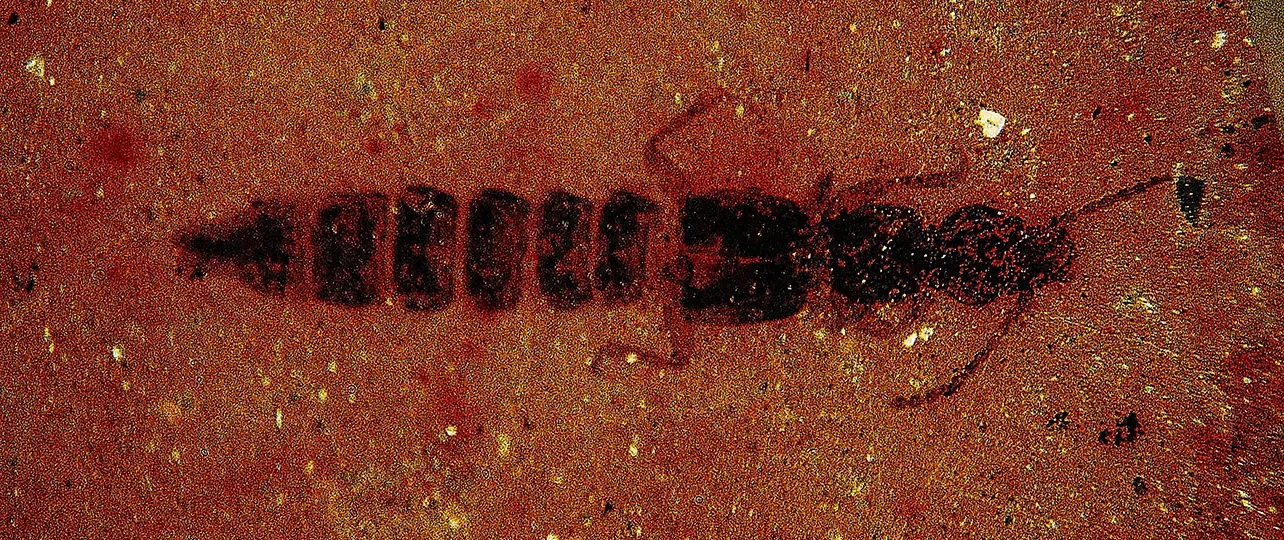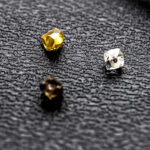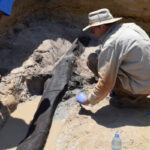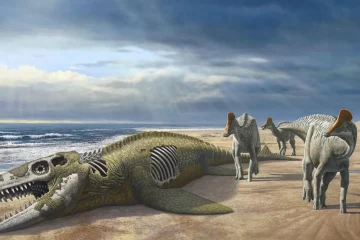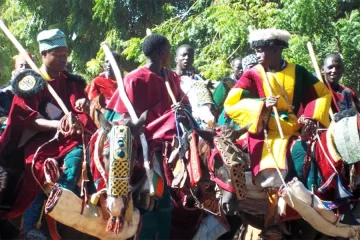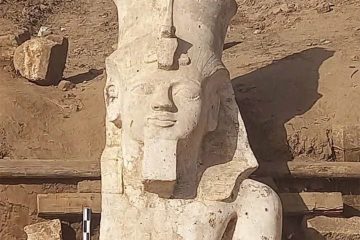A team of scientists from GENUS, a department of paleosciences at the University of Witwatersrand has discovered an ancient beetle species at the site that not only reaffirms Africa’s rich biodiversity but also contributes to understanding the mysteries of prehistoric life on Earth.
The latest discovery is in part thanks to the 1980 discovery of fossil material at the Orapa Diamond Mine in the Central District of Botswana, which sparked years-long research interest among scientists. This site is now emerging as a hotbed for groundbreaking research uncovering unique details about early life on Earth.
“This beetle is a clue into the long, intricate history of life on Earth, showing us how interconnected and unchanged some life forms have been over the ages,” a statement released by the university on March 25 explained.
The discovery reveals “a world where these beetles roamed alongside dinosaurs” according to the research institute.
The fossil beetle is estimated to be from the Cretaceous age, some 90 million years ago, and is the first recorded staphylinid rove beetle fossil to be discovered in Africa and the Southern Hemisphere.
National Geographic explains that the Cretaceous age, between 100.5 million and 66 million years ago, was a period when continents were on the move, driven by tectonic forces that re-modelled the surface of the Earth.
This explains why similar fossils have been found in diverse locations around the world, such as China, Russia, Myanmar, and England, underscoring the evolutionary argument that the world was once one unit, before disintegration.
Sandiso Mnguni, a South African palaeoentomologist and lead researcher on the project, explained to bird story agency that, “30 research outputs in the form of articles, reviews and PhD theses” have been produced from discoveries made at the important site.
“The fossil material includes fossil plants and insects, and it is housed in the Herbarium of the Evolutionary Studies Institute (at Wits)”, he said, adding that he believes more PhDs are likely to result from the discoveries.
The fact that African scientists are spearheading these initiatives underscores the growing paleoscience expertise on the continent. Apart from Mnguni, the team also includes South African zooarchaeologist Shaw Badenhors and Zimbabwean-South African palaeobotanist, Marion Kathleen Bamford,
The beetle, Paleothius mckayi, is named after Ian James McKay, a notable South African figure in the field of palaeoentomology who died in 2023. McKay is one of the pioneers of paleo research on fossil insects at the Orapa Crater Lake deposits.
Findings from the analysis of the specimen, published in the Journal of Entomological Science, offer a glimpse into why these rove beetles, with a symmetrical and elongated body, an elongated head, and notably long antennae, among other distinctive features, are unique.
“Its sharp, scissor-like mouthparts suggest a predatory lifestyle, actively hunting prey within the leaf litter surrounding a crater lake that once existed in this region,” the study report explains.
“Rove beetles, in general, are recognized for their highly mobile lifestyle and versatile habitat preferences, ranging from soil and leaf litter to water margins and even animal nests,” the report adds.
The unique find in Botswana confirms Africa as an important Cretaceous deposit, hosting rich biota made up of diverse groups of plants and insects. Specimens of the discovered species were unearthed from deposits that accumulate in lake environments.
Notably, the discovery adds to a growing list of landmark discoveries at the site, making it a critical part of paleoscience.
According to Mnguni, the process of describing a new species from fossils requires long hours of detailed morphological analyses and repeated examinations of the specimen.
“The more you look at the specimen, the better you’ll get at understanding it. You might notice details you missed before, which helps you describe it better,” he explained.
Beyond the rove beetle discovery, Mnguni confirmed there are more specimens to be discovered and described at the Orapa deposits and across the continent.
“My teammates are involved in other palaeontology projects in other African countries. Africa in general is a palaeontology hotspot, especially South Africa, Tanzania, Mozambique, Zimbabwe, and other countries,” he explained.
“There are many fossil insects belonging to other groups that await description,” he added.
Useful links:
